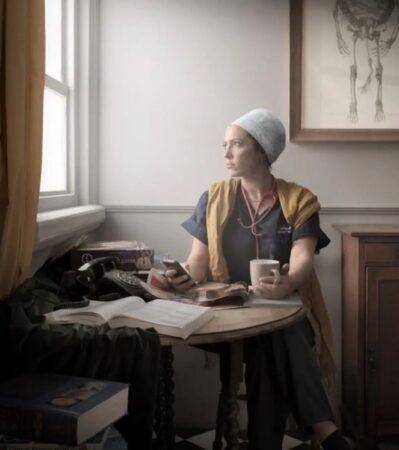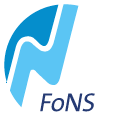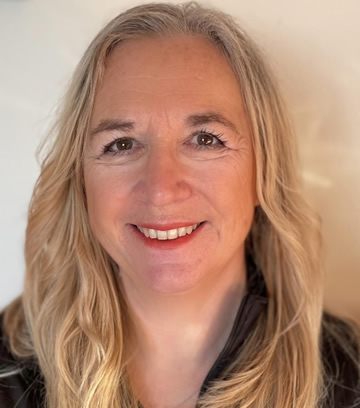Home News & Views Reflections on the Art of Nursing. Presence, the arts and person-centred practice
Reflections on the Art of Nursing. Presence, the arts and person-centred practice
Dr Marion Lynch BEM RN RMN FRSA
Global Health Consultant, Creative Health Consultant and FoNS Trustee
I couldn’t help but wonder: In a world where artificial intelligence can monitor vital signs, predict sepsis and provide cognitive behaviour therapy, what becomes of the nurse’s skills and gaze? That aspect of nursing that spots suffering before it is said, that skill of hearing a silence and knowing it is too long?
It is a great time to be a nurse. The ICN (2025) have a new definition of a nurse, and the NMC (2025) have defined advanced professional practice standards. Whilst we are told we are leaders and providing person-centred, culturally sensitive care, the everyday work of nursing often feels reduced to easily measured metrics. In the race to modernise, it is easy to forget that nursing is not only science, but also art. This does not make is less like science like, it just makes us more human.
What do we mean by the “Art of Nursing”?
The art of nursing is not about painting murals in break rooms or singing to manage COPD, or sensory gardens for dementia, though all have their place. The art of nursing is about our presence, not what we ‘do’ as a nurse, but in the wise words of Novice to Expert author Patrica Benner, (1984), the element that comes with ‘being’ a nurse. The art of nursing is knowing when to speak, when to wait, what tone to take, where the power needs to be. It is knowing when to hold a hand, and when to hold off and just be there. How many times have you heard someone say, ‘I don’t know what that nurse did, they were just there’? You know that it took a lot of knowledge and skill to be ‘just there’. It takes your ability to be creative, improvise care, be emotionally intelligent, culturally responsive, build a trusting relationship in a moment, empower someone, metaphorically hold them in their joy, pain or panic, and be there.
The problem is ‘being there’ is invisible. This aesthetic and ethical knowing described by Barbara Carper (1978) half a century ago is so much less visible than the empirical knowing that informs much of health and forms much of nursing now. The science bit of knowing, the empirical knowledge is the bit a bot can do, it is the bit that does not need you to know more than what the observations show. Nurses know and do so much more than this. Such aspects of nursing are however undervalued in our policies, and may be unmeasured in our evaluations. It is when they are missing, they are noticed most.
Learning the art: When the arts teach us how to nurse
So how do we teach something that’s largely intangible? That is where the arts come in, not just as entertainment or decoration, but as part of clinical care, part of nursing education, a way of doing and being a nurse. The arts can help us improve health, improve care and improve our own wellbeing too.
You may have seen this in the development of creative health in your workplace. Creative health is the integration of the arts into health and care. It includes the NHS social prescribing programme, (NHS, 2019; NASP, 2024; NCCH,2025), it includes health humanities in the clinical curriculum and it includes arts activities to aid recovery of physical and mental health and educate on promoting health too. It includes all the activities the Arts Council is advocating for to improve our communities as well as ourselves.
Using the arts and developing the art of nursing are happening quite silently alongside the loud announcements of the usefulness of artificial intelligence in nursing. We need both, the human and non-human elements in nursing.
FoNS is leading the way in nursing and helping to make this happen. I, as a Trustee, am bringing my arts in health expertise to clinical care, policy and education.
One Image That Says It All: Take a Break – Zoe
As this is a blog about the art of nursing, and the part art plays, I need to have a picture of a nurse. Here is Zoe. This is Maisie Broadhead’s photographic portrait of her twin sister Zoe, Matron of A&E at Whittington Hospital.

Credit: Zoe Take a Break. On loan to FoNS from Paintings in Hospitals.
This image, in the style of a time gone by, doesn’t show drama or disaster. It shows a moment of rest: Zoe, mid-shift, holding a cup of tea, caught in a moment of peace. A portrait of care as endurance, as grace under pressure. In the wellbeing programmes I developed after COVID I used this image to reflect and to then see and be able to say, ‘this is me’. Such programmes have built upon the I’m Fine Project that uses arts to help nurses in education, supervision or one their own for some personal reflection (Lynch 2022).
When speaking of this image, the artist Maisie says, ‘It’s an image of my very hard-working twin sister, so a potent one for me’. This is art that recognises the labour of nursing care.
This image, which now lives in the FoNS office, is on loan to the RCN for the Art of Nursing Exhibition. It also features in the Global Health 5050 (2023) Gates Foundation funded report on women’s inequality in the workplace and their This is Gender exhibition which I created the international competition for. Zoe has been helping policymakers see the people behind the statistics, been part of a wellbeing education package, and now watches over us in our quest to keep artful and artificial intelligence together.
The Art of Nursing Webinar Series, which I lead and is hosted by FoNS and the RCN, showcases how the arts are being used in nursing care, in nursing education, and in nursing research. Each webinar has artists and nurses, academics and service users sharing their stories in a way that mimics an eight-minute conversation rather than a lecture. These free-to-access sessions (register on Everbrite) have become a virtual visit to a gallery, a song, a show, or a moment to share nursing expertise. From 13.00-14.00 once every two months, artists, academics and nurses co-create knowledge on what the art of nursing looks like, sounds like, and feels like in practice.
Why this matters now
As artificial intelligence assumes more and more of the technical tasks in healthcare, the cognitive load, what remains is the emotional and relational work. And yet, that is the work most likely to be undervalued unless we name it, teach it and champion it.
This is nursing.
It’s also evidence-based. Creative health placements for nursing students improve wellbeing, critical thinking and connection to practice. Yet too often, students struggle to see creative health as part of ‘real’ nursing, because they haven’t been shown that it already is. This work on the art of nursing is now showing them what it is.
Final words. Artificial intelligence is not human; it may help us see patterns and produce plans and will help nurses do what nonhumans can do. Artful intelligence™ is about being human and being a nurse. The art of nursing helps us see people and be nurses. The future of nursing is not a choice between the two, it is a commitment to both.
All of the Art of Nursing webinars are available online – why not have a look at this inspiring series of talks!
- The Art of Nursing: Hearing Silent Voices
- The Art of Nursing: Creative Health in the Curriculum
- The Art of Nursing the Planet Webinar
- The Art of Nursing: Real Partnership through Art
Future webinars
16 July 2025: Creativity, resistance and renewal. Stories from the exhibition
24 September 2025: Novel nurses
13 November 2025: Gender inequality
22 January 2026: The magic of the art of nursing
5 March 2026: Musical notes on nursing
References
Benner, P. (1984). From Novice to Expert: Excellence and power in clinical nursing practice. Addison-Wesley.
Carper, B.A. (1978) Fundamental patterns of knowing in nursing. Advances in Nursing Science, 1(1), 13-23. https://doi.org/10.1097/00012272-197810000-00004.
ICN (2025) New Definition of Nurse and Nursing. https://www.icn.ch/resources/publications-and-reports/renewing-definitions-nursing-and-nurse
Global Health 5050 (2023a) This is Gender Exhibition, featuring nurse Zoe. https://thisisgender.global5050.org/collection/
Global Health 5050 (2023b) Workplaces: Worse for Women. https://global5050.org/wp-content/themes/global-health/reports/2023/media/Global%20Health%205050_2023%20Report.pdf
Lynch, M (2022) I’m Fine Project. FoNS https://www.fons.org/news-and-views/publications/
National Academy for Social Prescribing (NASP) (2024) Envisaging a Social Prescribing Fund in England [Report]. National Academy for Social Prescribing. https://socialprescribingacademy.org.uk/resources/new-report-calls-for-social-prescribing-fund/
National Centre for Creative Health (NCCH) (2025) Creative Health Associates, Our First Three years. https://ncch.org.uk/uploads/NCCH-Impact-Report-2001-2024_Digital.pdf
NHS England (2019) The NHS Long Term Plan. https://www.longtermplan.nhs.uk/
Nursing and Midwifery Council (2025) Principles for Advanced Practice. Nursing and Midwifery Council. https://www.nmc.org.uk/news/news-and-updates/new-principles-for-advaced-practice-to-bring-clarity-and-consistency/
Ridgway, V., Skyrme, S., Henshaw, R., Blain, J., Devine, J., Mitchell, D., Duffett, M. and Bailey McHale, R. (2025) Creative Health a Joke or valuable learning experience: A mixed methods study. Nurse Education Today, 148, Article 106628. https://doi.org/10.1016/j.nedt.2025.106628
Comments are closed.


